
Editor's Note: This story originally appeared on The Penny Hoarder.
This summer is expected to be “warm, hot and muggy” for most of the nation, according to the 2024 Farmer’s Almanac. That means now is a good time to figure out how to lower your electric bill costs to stay cool.
With rising food prices, gas prices and now power bills, we could use a break. A little preventive maintenance and some other easy fixes can help keep costs down.
This year, the U.S. Energy Information Administration predicts a 4.5% annual increase in cooling degree days, which are the days when it is likely one would need to cool their home or building.
The Energy Information Administration also shows that air conditioning use has steadily climbed each year, with 77% of Americans using air conditioning in 2001 to 88% in 2020 — with no slowing down in sight. And with heat rising well into the 100-degree Fahrenheit range, many of us can expect to be using AC nearly every hour of the day this summer.
With air conditioning often costing $25 a day to run — or nearly $800 per month — it can pay to get creative about how to lower electric bill costs in your home.
From closing off unused rooms to simple maintenance checks and fixes, these tips to avoid sticker shock from your electric bill are worth the effort.
1. Get a Free Home Energy Assessment
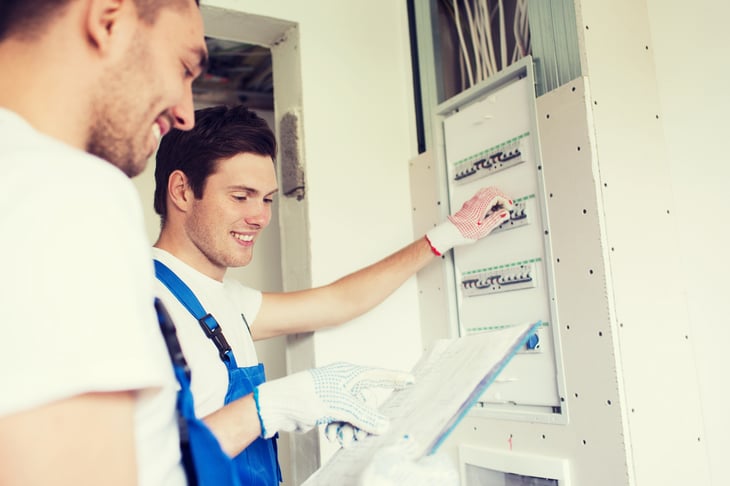
Many power providers offer free home energy assessments or home energy optimization kits.
Xcel Energy, which serves much of the northern Midwest and mountain regions of the U.S., provides a free virtual visit with a Home Energy Squad member, followed by a free kit to optimize your residential electrical usage.
2. Seal Cracks and Leaks
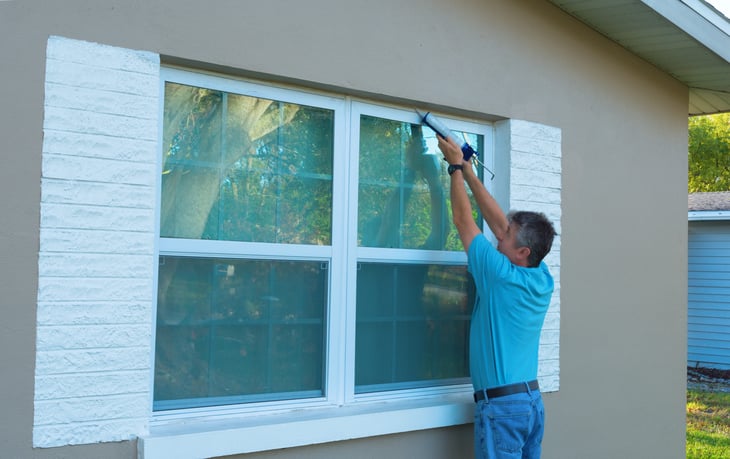
When the heat is high, don’t let any precious warm or cool air escape due to drafty doors and leaky windows. Seal these money-draining spaces with inexpensive draft tape, often ranging from $10 to $25 on popular sites like Amazon.
3. Upgrade to Efficient Equipment With a Rebate

Although upgrading HVAC systems and thermostats can be pricey, many electrical companies offer rebate programs. ConEd, which serves New York City, offers rebates on smart thermostats.
Check with your energy provider to see if rebates are offered in your area. This could mean more than $100 back in your pocket.
4. If You Have a Smart Thermostat, Use It

For those who already have a Nest or other programmable thermostat in your home, take the time to program it.
Smart thermostats offer zonal and timed heating and cooling, which on average will save most homeowners 10%-12% on heating bills and up to 15% savings on their cooling bills.
5. Take a Timeout on Energy Consumption

Another way to lower your electric bill is to add an outlet timer to window unit heaters.
These helpful gadgets cost $10 to $20 and will make your home more energy efficient and limit the amount of “phantom power” (the power your devices leech from outlets even when not turned on) contributing to monthly energy bills.
6. Let Mother Nature Do the Laundry
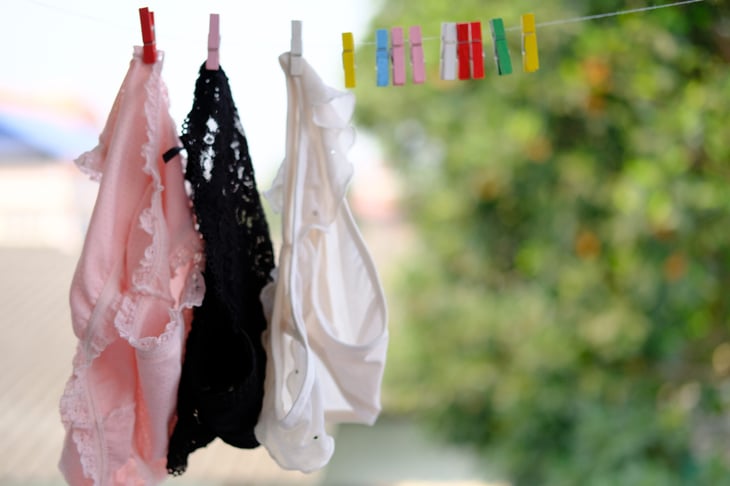
Although typical clothing dryers do not themselves increase electric bills all that much (they cost about $100 per year in energy), leaving a hot dryer running multiple times a week can heat up your living space, resulting in you (understandably) cranking up the AC.
Instead, try air drying your clothes when possible. The summer sun has to be good for something, right?
7. Invest in a One-Time Duct Cleaning
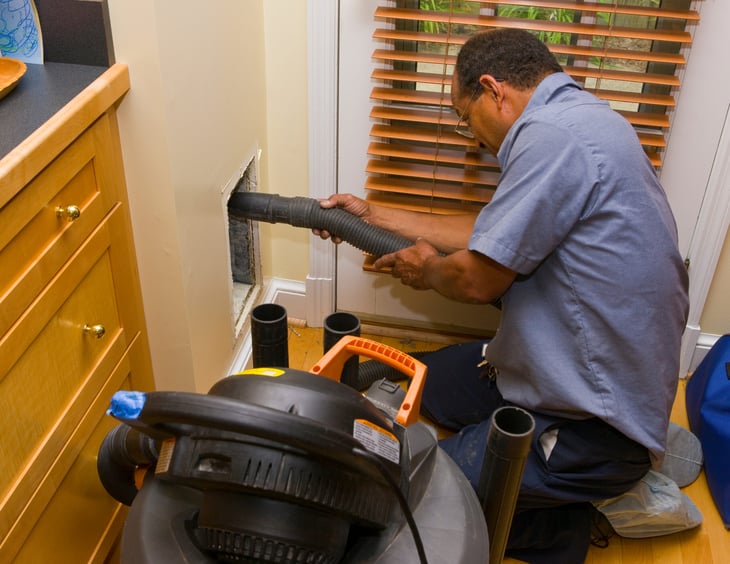
A major cause of ineffective or inefficient home cooling may be clogged ductwork. Over the years, debris like dust, pet hair and dander can accumulate in vents and make it difficult for air to flow smoothly throughout your space.
Cleaner ducts can be a great way to lower electric bills, because you’ll be less likely to turn up the air conditioning.
Fortunately, HVAC system maintenance is pretty affordable, and a one-time vent cleaning will only take $200 to $300 out of your home maintenance budget.
8. Change Your Air Filter
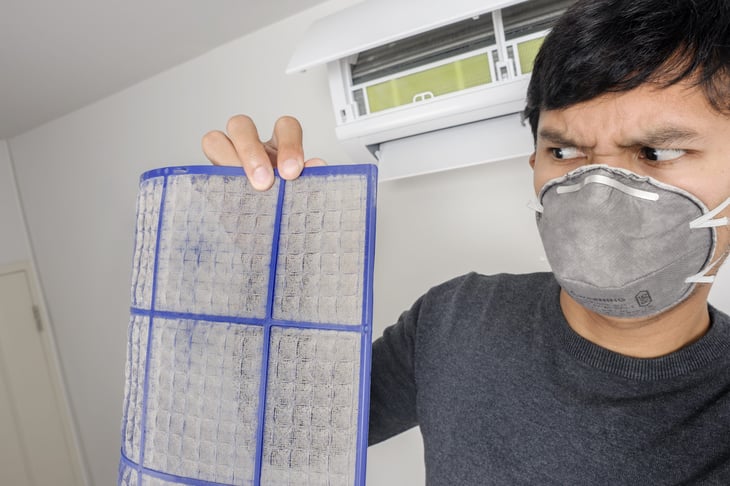
Air filters do just that — filter out tiny particles and debris generally undetectable to the human eye. This provides us with clean air circulating in our homes.
However, these filters need to be changed about every three to six months in order to work properly. Clogged filters inhibit effective airflow and can lead to higher energy costs due to forcing your air systems to work harder to pump out cool air.
9. Run Appliances at Night

Some electric companies charge higher rates during the day (aka peak hours) and lower rates in the evening (aka off-peak hours).
If you’re wondering how to lower the electric bill, it can help save a few bucks here and there to run larger appliances like dishwashers, clothing dryers, and washing means while you’re getting some shut-eye.
10. Make the Move to LED

Incandescent bulbs release about 90% of their energy as heat. Couple that with the fact that they generally are not energy efficient, and it’s enough to make the case to switch to LED bulbs.
LED bulbs can save consumers as much as $75 per month and they give off little-to-no heat.
11. Replace Window Screens

As we already mentioned, leveraging Mother Nature when possible to decrease your bill and your energy consumption is a great idea.
In this case, replacing snared, ripped window screens with relatively inexpensive new ones (approximately $30) can help to better insulate your windows, preventing any unwanted major cracks or gashes from emitting hot, humid air into your home.
12. Insulate Hidden Areas
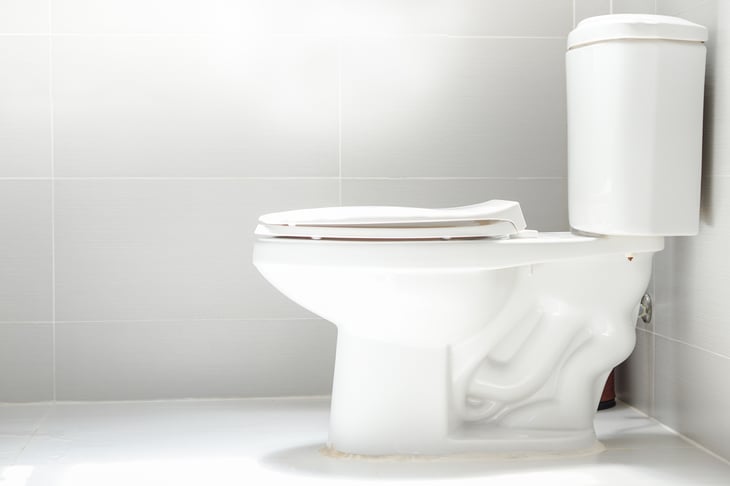
Any item in your house that has pipes behind it (toilets, sinks, etc.) likely is simply sitting in an open hole in the wall with no insulation. This means that in the summer cool air could be leaking out or warm air could be seeping in.
Consulting with a professional to learn more about how adding insulation behind toilets and sinks can help make your home more energy efficient by eliminating these air leaks across your house.
13. Close the Door

If you live in a multi-room home, closing the doors to unused rooms will consolidate your air conditioning usage and keep rooms much cooler.
Pick a room or two to hang out in for the majority of the day, and shut the doors to the others to naturally create zonal cooling. A painless way to lower your electric bill.
14. Reduce Phantom Power
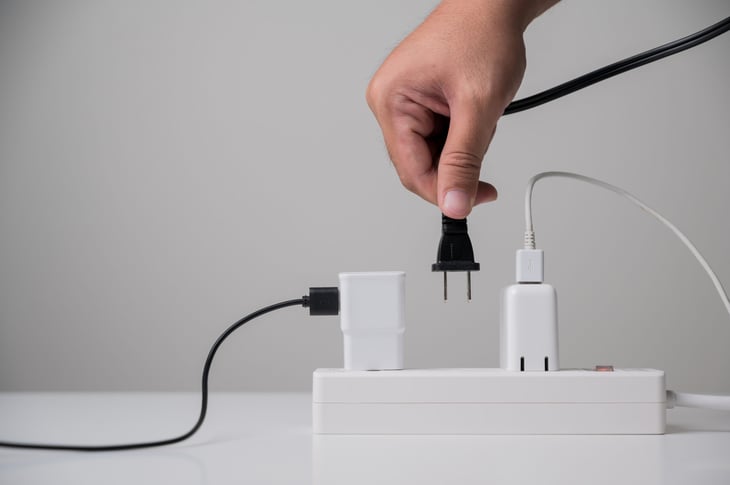
Even if appliances like lamps or TVs are not turned on, the fact that they remain plugged in means those items could be leeching “phantom power” from your home and jacking up your electric bill.
Phantom power refers to the electricity consumed by objects when they are off or in standby mode. This allows them to quickly turn on, but means your electric bill pays the price.
Consider unplugging lamps, appliances and more when not in use to save on your next energy payment.
15. Add an Energy Efficient Power Strip

While you’re unplugging unused objects, think about adding an energy-efficient power strip to cut down on your bill.
Some estimate that installing energy-efficient power strips (which cost only $20 to $30 each) can save $100 per year when used with gaming consoles alone.
16. Lower the Hot Water Heater Temperature
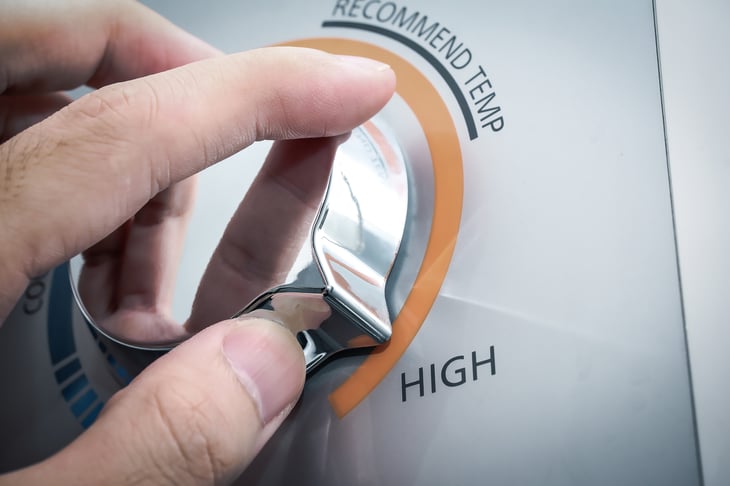
The default temperature for water heaters is 140 degrees, which wastes between $36 and $61 a year, according to the Department of Energy.
According to the DOE, lowering the maximum temperature to 120 degrees is perfectly fine for the majority of the population.
But if you or a member of your household has a chronic respiratory disease or a suppressed immune system, it may be best to keep your water heater set to the default temp.
17. Decrease Door Drafts with a Draft Stopper
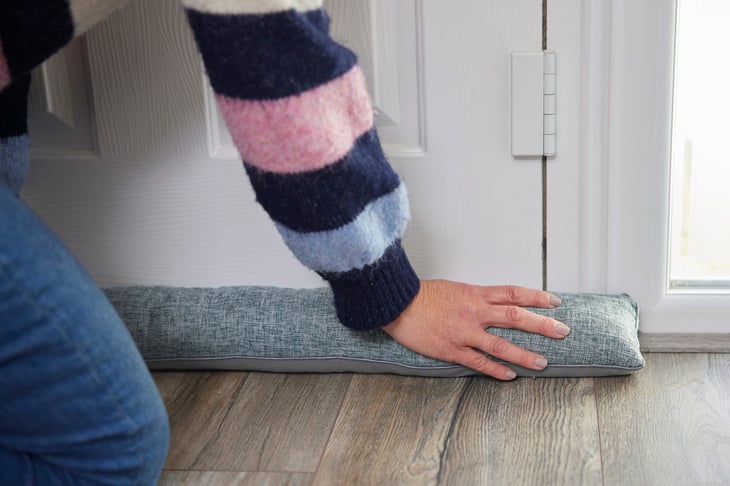
Using the aptly named draft stopper on your doors can further prevent air leaks throughout your home. For only $12, you can keep precious air-conditioned air circulating in your space without losing it to wasteful door leaks. Another painless way to save money.
18. Use Exhaust Fans
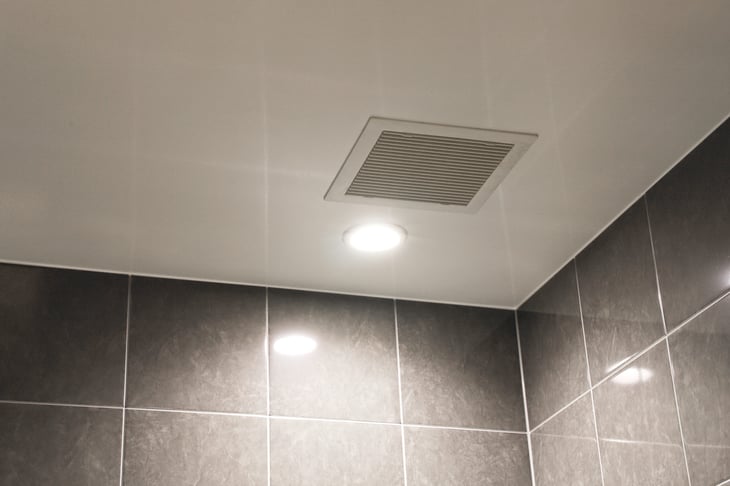
Exhaust fans are generally already built into your home, like the kind above a stove or shower. These fans do an exceptionally good job of circulating air and removing moisture and humidity from that air.
Running these fans even when not cooking or in the shower can improve air circulation and decrease the need to crank up the heat and your power usage.
19. Go Through a Checklist

Owning or renting a home comes with all sorts of maintenance. It can be hard to keep track of what to do at what time of year in order to keep your space clean and efficient.
Referring to a home checklist like this one can ensure you are ticking off the correct boxes to prepare your home for warmer months, potentially saving you some dough on electric bills throughout the summer.
20. Rearrange Your Furniture

Go through the house and check to make sure you don’t have beds, dressers, bookcases or other furniture blocking cooling vents.
If the vents are blocked (especially by taller items like bookshelves) and air conditioning isn’t evenly distributed, this may cause you to turn up the air conditioning unnecessarily.
21. Seal the Chimney

Sealing off your chimney — or at least closing the damper — prevents cool air from leaking out and hot air from wafting in. There are lots of different ways to seal a chimney, from a $50 chimney balloon to using plastic to cover the hearth.
Consult with a professional to find out what’s right for your home.
22. Use Less Water

Although most folks are billed for water separately from electricity, you can save a pretty penny by being more conscious about how much water your family uses in the summer, when droughts and water shortages are common.
Instead of filling up a multi-gallon kiddie pool at home for children or furry friends to cool off in, consider taking advantage of public pools and beaches, many of which cost just a few bucks for admission.
23. Upgrade Your Blinds
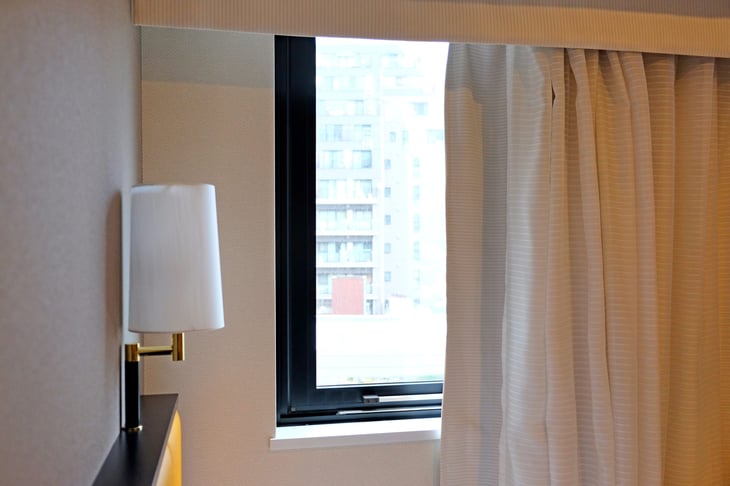
It’s no secret that sun-facing windows can cause a room — or the entire house — to heat up beyond what’s comfortable. Flimsy blinds are more than just ineffective, they could be causing your electric bill to rise.
Spending around $30 for a set of blackout curtains will help keep your home cooler by entirely blocking out the sun, decreasing your need to crank the AC.
24. Dinner for Breakfast

Well, not actually. But being smart about using the oven can keep your home cooler and result in lower electrical bills.
Cooking with an oven in the morning, when it’s cooler out, can prevent your home from overheating when cooking say, at 5 p.m. Likewise, using an oven closer to those off-peak hours means it may not cost as much to run.
A cooler house using less AC and a delicious meal? What’s better than that?
25. Become a Fan of … Fans

Fans are a tried-and-true way to lower electric bills and cool down in warmer months.
Placing fans throughout your home will use less energy than an air conditioner and can leverage cooler evenings to provide a naturally pleasant temperature without the energy bill hike.






Add a Comment
Our Policy: We welcome relevant and respectful comments in order to foster healthy and informative discussions. All other comments may be removed. Comments with links are automatically held for moderation.